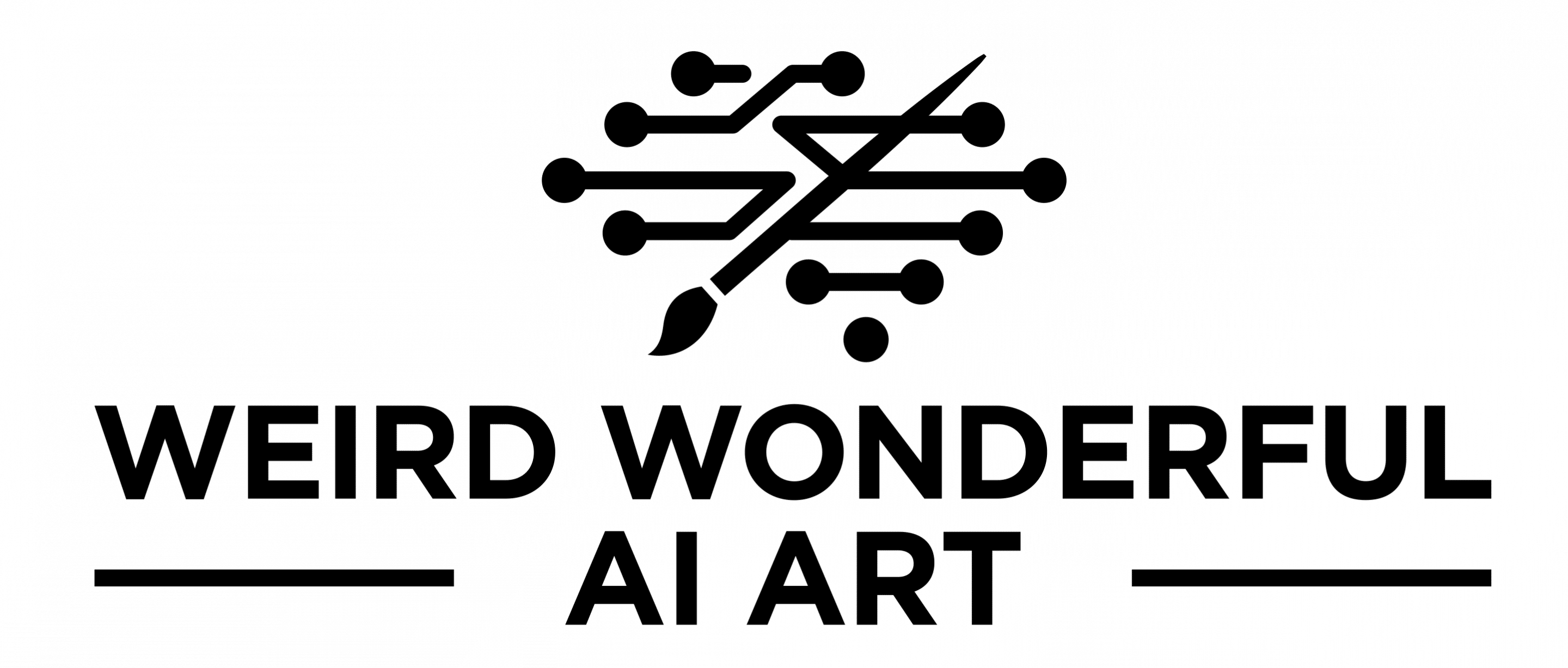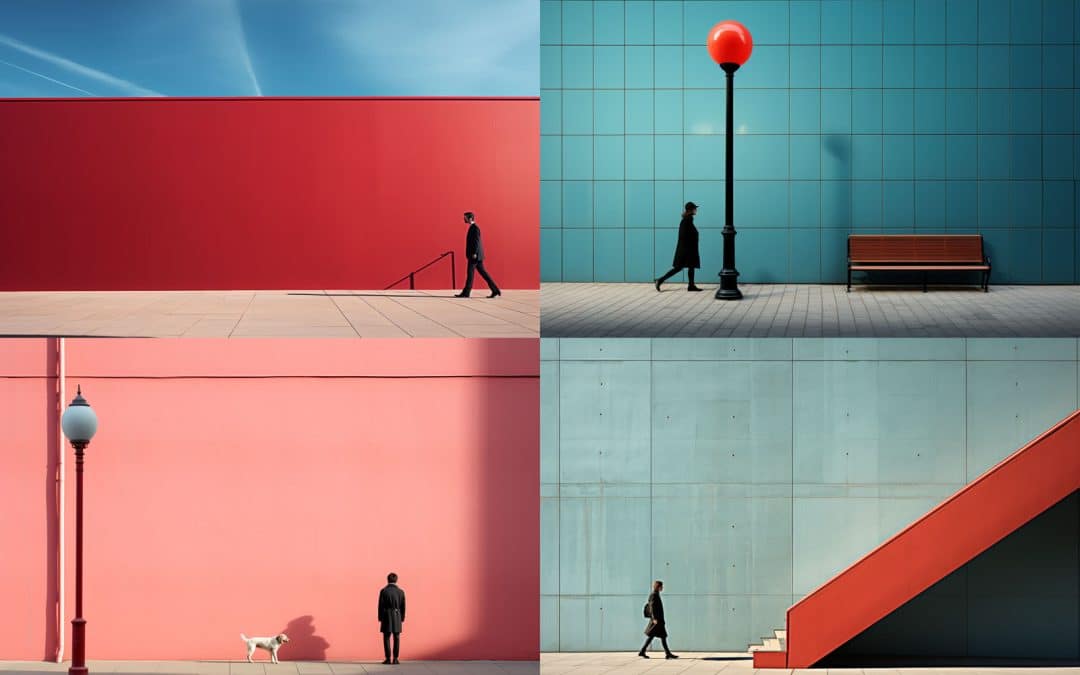In the world of photography, minimalist style has emerged as a captivating approach that embraces simplicity, clean lines, and a focus on essential elements. Minimalist photography distills the subject matter to its core, allowing viewers to appreciate the beauty found in minimal details. In this blog post, we delve into the world of minimalist style photography using Midjourney, exploring by creating a prompt that describes this style of photography and we will also add a well known photographer that will influence the final result.
If you are new to minimalist style of photography you might want to learn about the below characteristics and techniques employed in this style of photographs.
- Less is More: At the heart of minimalist photography lies the concept of “less is more.” Minimalist photographers seek to convey their vision by removing distractions and presenting only the essential elements within the frame. By stripping away unnecessary details, minimalist photographs achieve a sense of clarity and visual purity, often resulting in images that evoke tranquility and serenity.
- Embracing Negative Space: Negative space plays a crucial role in minimalist photography. It refers to the empty or unoccupied areas within an image, which are intentionally left void of any significant subject matter. By purposefully utilizing negative space, photographers can draw attention to the subject, evoke a sense of solitude, and create a balanced composition that is both visually striking and emotionally engaging.
- Clean Lines and Geometry: Minimalist photographs often feature clean lines, geometric shapes, and precise compositions. These elements provide a sense of order, symmetry, and visual harmony. By using architectural structures, simple patterns, or even natural landscapes, photographers can create compelling images that celebrate the aesthetics of minimalism.
- Monochrome and Limited Color Palette: Many minimalist photographers opt for monochrome or a limited color palette to further emphasize simplicity and eliminate distractions. Black and white imagery can enhance the visual impact, accentuating contrasts, textures, and the play of light and shadow. Restricting colors to a minimal selection allows for a focused and intentional use of hues, enabling specific elements to stand out and make a powerful visual statement.
- Emotion and Contemplation: Minimalist photography has a unique ability to evoke emotions and invite contemplation. By presenting subjects in their purest form, devoid of unnecessary clutter, viewers are encouraged to pause, reflect, and find beauty in the subtlest of details. These photographs often evoke a sense of calmness, evoke curiosity, and encourage viewers to explore the relationship between the subject and their own emotions.
The prompt: minimalistic photography style of <artist name>, street photography, sense of minimalism, negative space, precise composition, limited colors, aesthetics of minimalism –ar 3:2 –s 500
We will explore this prompt using these 17 popular photographer’s names: Hiroshi Sugimoto, Michael Kenna, Andreas Gursky, Edward Burtynsky, Toshio Shibata, Todd Hido, Wolfgang Tillmans, Joel Meyerowitz, Daido Moriyama, Rinko Kawauchi, Robert Adams, Saul Leiter, Luigi Ghirri, Michael Wolf, Hilla and Bernd Becher, Thomas Struth, Toshimitsu Sasaki.
Using the multi-prompt method we can quickly and easily explore many artists using this method. A little bit about the artist as we explore the images generated with Midjourney.
Hiroshi Sugimoto
Sugimoto’s minimalist photographs often focus on architecture, seascapes, and empty movie theater interiors. His long exposure images convey a sense of stillness and timelessness.
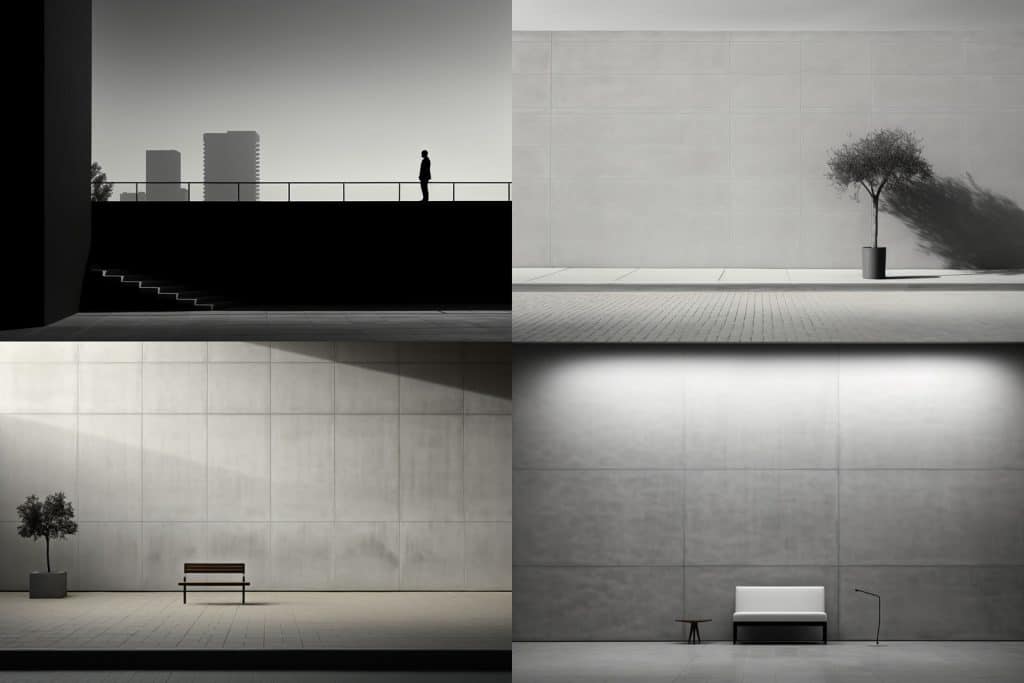
Michael Kenna
Kenna’s black and white photographs are characterised by their simplicity and minimalistic compositions. He often captures landscapes, urban scenes, and serene natural environments.

Andreas Gursky
Gursky’s large-scale photographs feature minimalist aesthetics with a focus on architecture, landscapes, and crowded urban spaces. His images often present a sense of scale and abstraction.

Edward Burtynsky
Burtynsky’s work explores the intersection of human activity and the natural environment. His photographs capture industrial landscapes, mines, and other man-made structures, showcasing their minimalist yet imposing presence.

Toshio Shibata
Shibata’s photographs predominantly depict landscapes shaped by human intervention, such as dams, bridges, and highways. His minimalist compositions emphasise the interaction between nature and infrastructure.
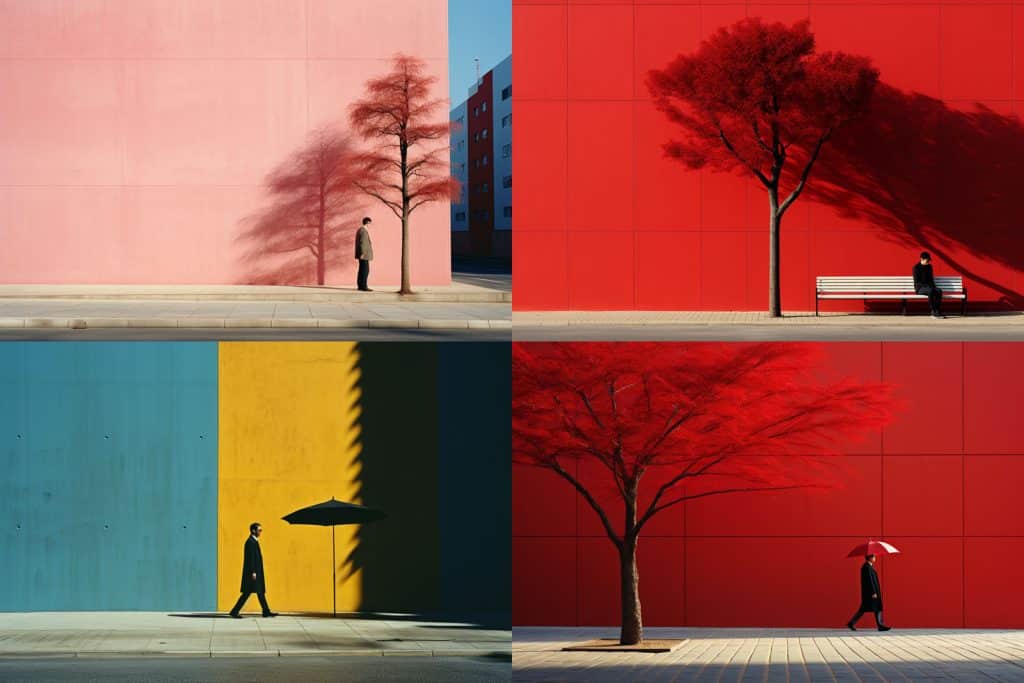
Todd Hido
Hido’s minimalist photographs often explore themes of suburban landscapes, empty houses, and obscured views. His images evoke a sense of mystery and solitude.

Wolfgang Tillmans
Tillmans’ work spans various styles and subjects, but he also incorporates minimalistic elements in his photography. His images often explore light, colour, and abstraction.

Joel Meyerowitz
Meyerowitz is known for his minimalist approach to street photography, capturing fleeting moments and everyday scenes with a keen eye for composition and colour.
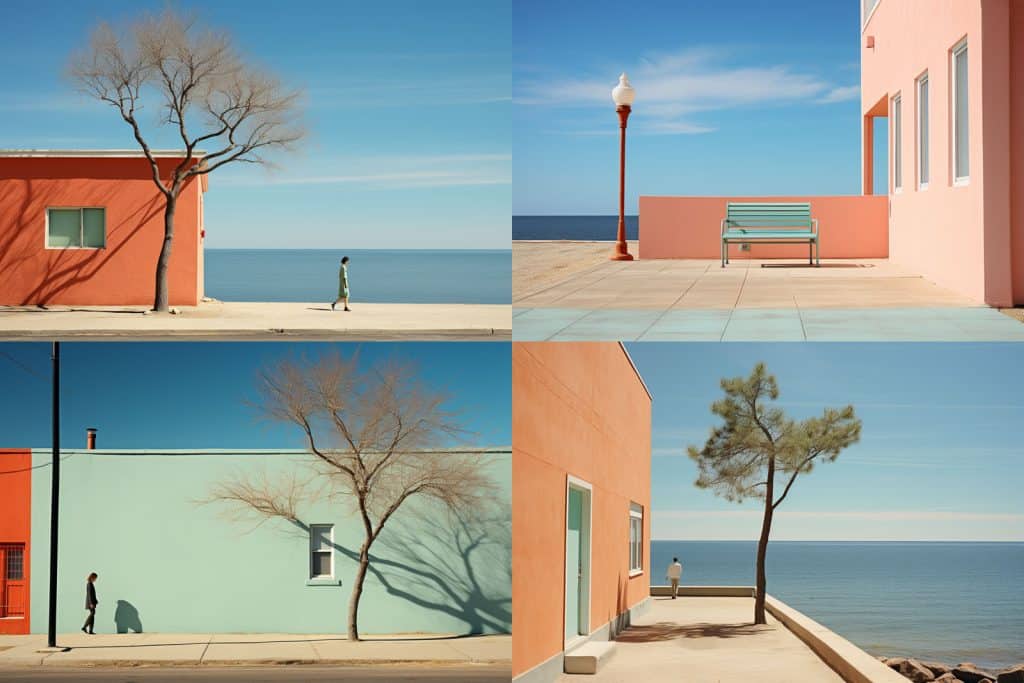
Daido Moriyama
Moriyama’s black and white photographs often feature urban environments, emphasising texture, contrast, and a raw aesthetic.
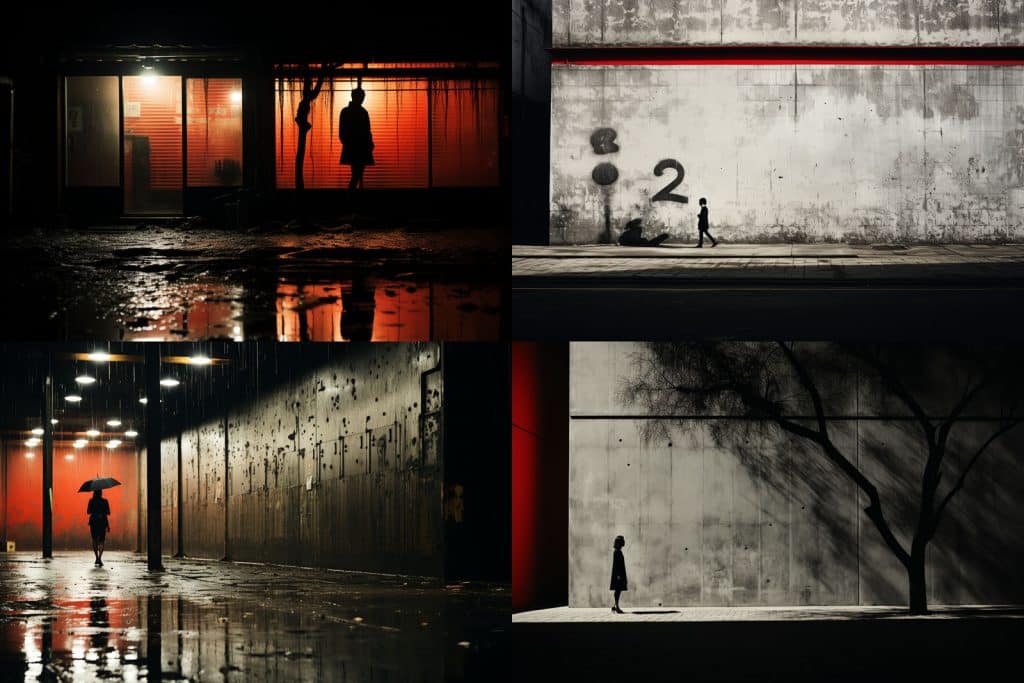
Rinko Kawauchi
Kawauchi’s minimalist photographs explore themes of nature, everyday life, and moments of serenity, often characterised by soft colours and delicate compositions.
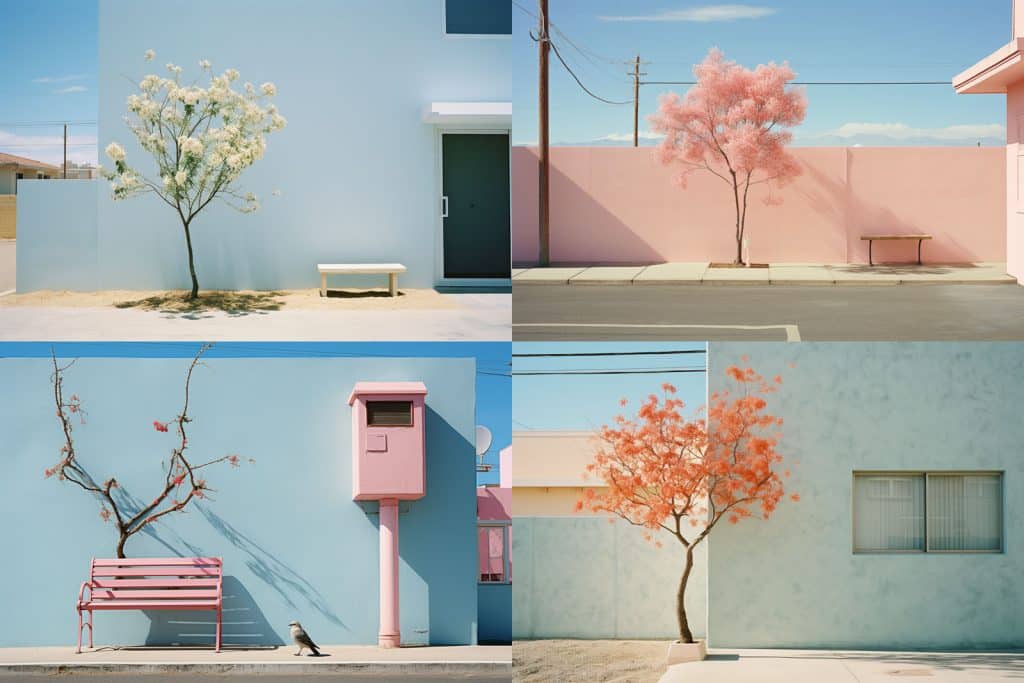
Robert Adams
Adams’ minimalist landscapes focus on the American West, highlighting the impact of human development on the natural environment and capturing the quiet beauty of the region.
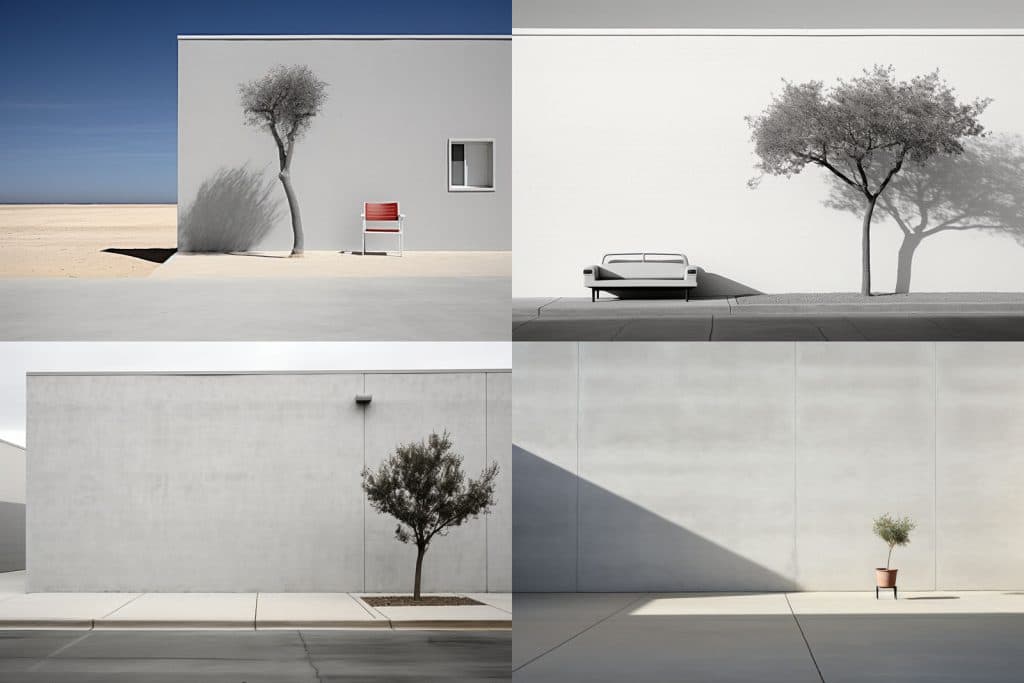
Saul Leiter
Leiter’s minimalist photographs often feature abstracted urban scenes, emphasising colour, light, and shadow to create visually poetic compositions.

Luigi Ghirri
Ghirri’s work combines elements of minimalism and conceptual photography, exploring themes of architecture, landscapes, and the relationship between humans and their surroundings.

Michael Wolf
Wolf’s minimalist photographs often depict urban landscapes and architecture, showcasing the repetition, patterns, and anonymity found in dense city environments.

Hilla and Bernd Becher
This artistic duo focused on industrial structures and buildings, photographing them with a consistent and objective approach, resulting in minimalist grids of similar structures.
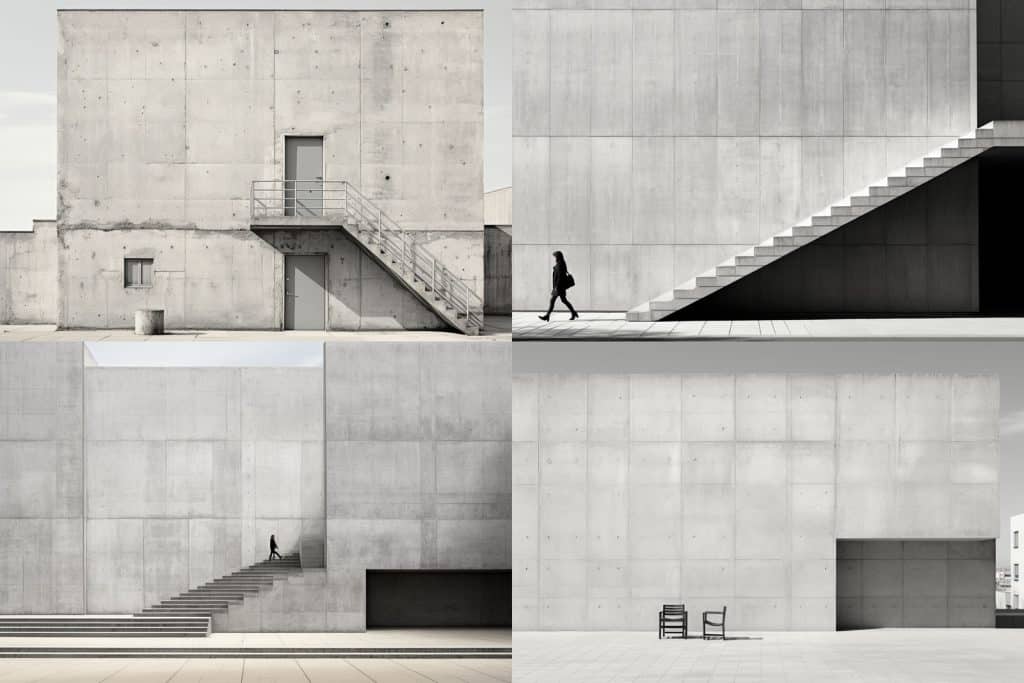
Thomas Struth
Struth’s photographs often feature large-scale urban scenes, capturing the intersection of people and architecture in a minimalist yet grand manner.
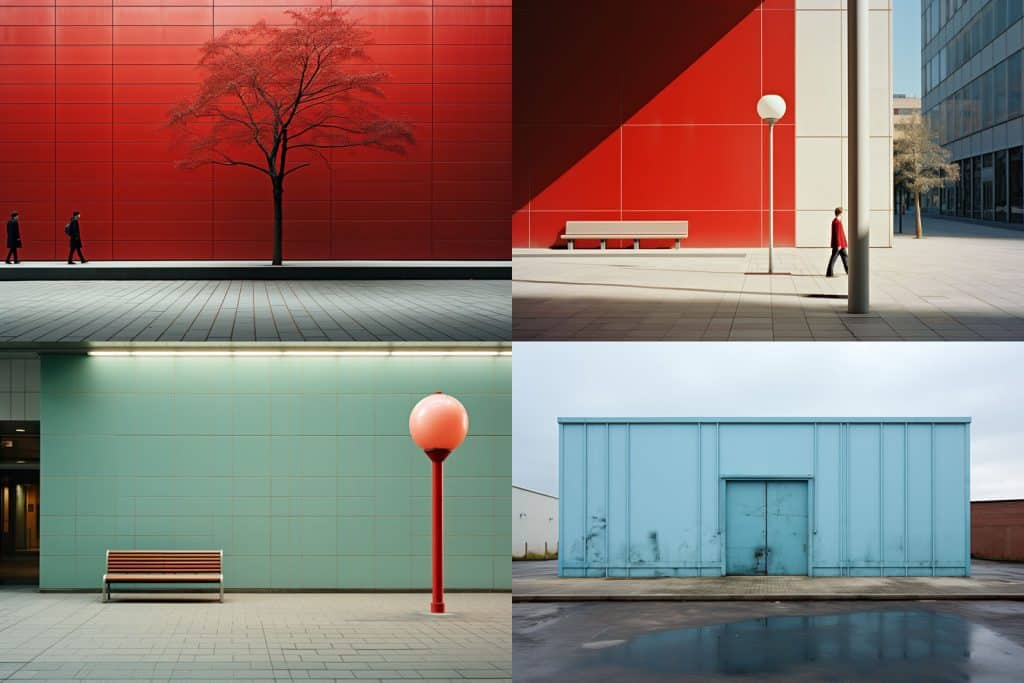
Toshimitsu Sasaki
Sasaki’s minimalist photography explores the interplay of light and shadow, often featuring architectural details and the simplicity found in everyday objects.

Conclusion
As you can see that Midjourney does a fantastic job at exploring minimalistic styles of these photographers/artists and depicts their style in the images it produces. Another great way to explore and create unique images is by combining various different artists together.
Prompt: minimalistic photography style of Daido Moriyama and Saul Leiter, street photography, sense of minimalism, negative space, precise composition, limited colors, aesthetics of minimalism –ar 3:2 –s 500

Midjourney is able to re-interpret simplicity, clean lines, and essential elements that minimalist photographers create in there images. It actually does not require long elaborate prompts and is able to create the final image with only some basic words combined with a photographer who is well known for Minimalist photography.
I hope you will give it a try, feel free to share any other photogs that you have found to produce great images in Midjourney.
If you'd like to support our site please consider buying us a Ko-fi, grab a product or subscribe. Need a faster GPU, get access to fastest GPUs for less than $1 per hour with RunPod.io
